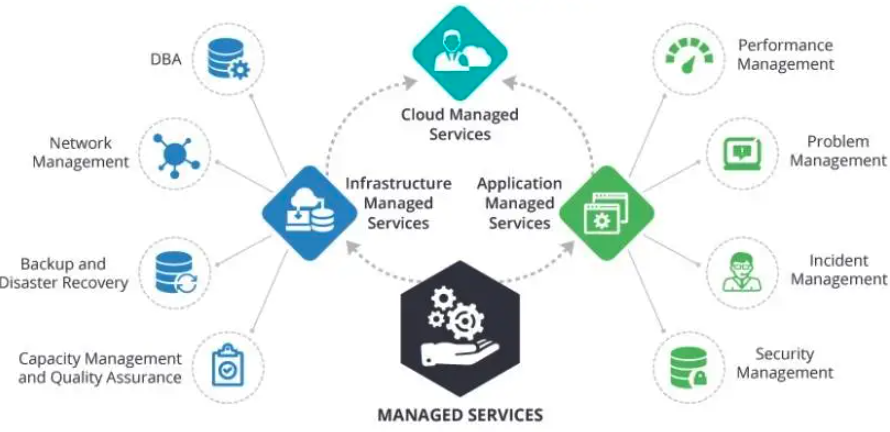
MSP User (Image by Forbes)

MSP User (Image by Forbes)
Before we take a look at the MSP user and the MSP landscape, it is essential to clarify what an MSP is. MSPs are specialized companies that are in charge of the management and maintenance of a company’s IT infrastructure.
They provide a wide range of services, from network security to data backup and recovery. These services are customized to meet the unique needs of each business.
Think of MSPs as a full-service, off-site IT department with more resources and a more comprehensive range of capabilities. So, the MSP ecosystem is not a one-way street. It’s a complex system of interdependent relationships.
For companies looking to leverage technology for growth, understanding the MSP user and its landscape is critical. So, let us get to know MSPs in more detail.
Understanding the MSP user landscape is critical for MSPs to effectively deliver services, build strong relationships, and achieve mutual success.
The MSP user landscape is made up of numerous stakeholders, each of whom plays a critical role in the overall IT ecosystem. Let’s take a closer look at the key stakeholders and their contributions:
Clients are the driving force behind MSP engagements, as they seek to outsource their IT management needs to experienced professionals.
They range from small businesses to large enterprises, each with their own unique set of IT needs and goals.
Every client wants to streamline IT operations, manage costs, and ensure technology upgrades and security.
MSPs are engaged to provide a range of services, from basic IT management to advanced cybersecurity solutions, to meet their clients’ needs.
IT teams can be internal, customer-owned, or part of the MSP’s staff. They are responsible for the implementation, management, and maintenance of IT infrastructure and services.
Internal IT teams can work with MSPs to enhance their existing capabilities. MSP IT teams focus on delivering and maintaining the required services.
Both IT teams ensure the technology aligns with business goals, operates smoothly, and resolves any technical issues that may arise.
Both teams have a deep understanding of the organization’s IT infrastructure, cloud services, challenges, and goals, ensuring seamless collaboration.
The end users of MSP services are the employees who rely on IT systems to perform their daily tasks.
End-user satisfaction with MSP services has a direct impact on the overall customer experience.
An excellent end-user experience is critical to evaluating the effectiveness of MSP services.
A positive end-user experience can increase productivity and improve efficiency within the customer’s organization.
In addition, end-user feedback often helps the MSP improve its services.
In the MSP landscape, these entities are not isolated. They are part of a symbiotic relationship where each relies on and benefits from the other.
Clients drive demand and provide direction for services. Their needs and feedback shape the MSP’s offerings.
IT teams, whether internal or external, serve as the hub. IT teams implement these services effectively, aligning technology with business objectives.
End users’ interactions with technology influence future IT decisions and strategies, making their role in the feedback loop critical.
Having a clear comprehension of roles, duties, and anticipations is essential to the success of IT relationships.
Each user group within the MSP relationship plays a distinct role in contributing to the overall effectiveness of IT operations and end-user satisfaction.
Clients are businesses seeking MSP services. The client’s primary expectation is the seamless management of their IT infrastructure.
To meet those expectations, clients must have clear goals and expectations for their IT needs.
They rely on MSPs for efficient IT management and require reliable, secure, and up-to-date technology support.
That’s why clients are responsible for communicating their specific IT requirements, business goals, and constraints.
Effective communication is critical for MSPs to tailor their services and ensure alignment with the customer’s business strategy.
IT teams, whether internal to the client organization or part of the MSP, are responsible for implementing and managing IT solutions.
We recognize that these teams have extensive knowledge of the organization’s IT infrastructure.
They have an intimate understanding of current systems, configurations, and potential vulnerabilities. Therefore, IT teams need to share and collaborate.
For a seamless transition and ongoing partnership, client IT teams share expertise with the MSP’s IT team. Then, the IT team manages and maintains the internal IT systems.
They are also responsible for day-to-day IT operations management, problem resolution, and minor incident handling.
End users expect a user-friendly and reliable IT infrastructure. Therefore, they must follow set guidelines for software usage, data security, and password management.
Then, feedback on system performance and usability becomes critical. It helps MSPs and IT teams refine and improve their services.
Therefore, end users must clearly articulate IT issues, error messages, and any relevant context.
Finally, end users must actively participate in the troubleshooting process by providing the necessary information and feedback.
To truly excel and deliver exceptional value, MSPs must embrace the concept of tailoring solutions to the unique needs of their diverse user groups.
Why do MSPs need to customize what they offer? First and foremost, customization is crucial for meeting specific business needs.
As we all know, every business faces unique challenges and requirements. Customized MSP solutions ensure that these specific needs are effectively addressed.
In the MSP perspective, customized solutions refer to aligning IT services with the workflows and processes of clients’ businesses.
This harmony results in increased efficiency and productivity, as technology seamlessly supports the core operations of the business.
Moreover, when MSPs demonstrate their ability to understand and meet specific client needs, it builds trust and fosters long-term partnerships.
Now, let’s take a look at how MSPs tailor their approach to each client’s specific needs. The result is a solution:
Several examples show the power of MSP-user collaboration and the positive impact of customized solutions. Review the following scenarios:
A retail giant: The MSP implements a customized e-commerce platform that seamlessly integrates with the client’s existing systems. The result is increased revenue and customer satisfaction.
These examples show how MSPs that prioritize customization can transform business success by delivering solutions tailored to meet the unique needs of diverse user groups.
Effective communication is the lifeblood that nourishes relationships, fosters understanding, and drives alignment between MSPs, clients, and end-users.
Poor communication can lead to misunderstandings, frustrations, and ultimately failed engagements within an ecosystem. But effective communication can be joyful to:
A lot of work goes into making the MSP’s communication with clients transparent and proactive. Here is a look at some of it:
With those acts of effective communication, MSP user groups can provide each other with helpful comments, ideas, recommendations, and feedback.
Feedback loops are essential to helping the MSP and client continue to improve each other. By implementing effective feedback mechanisms, MSPs can encourage:

In addition to communication, technology adoption, and user training are challenging parts of the onboarding process between the MSP and the customer.
We must recognize that technology adoption and user training are critical to improving the overall user experience. Together, they ensure that the full potential of MSP services is realized.
Technology adoption, when implemented effectively, can significantly enhance the MSP user experience. New technologies can:
However, technology adoption can also introduce challenges if not accompanied by proper user training and support.
Unfamiliarity with new systems, fear of change, and resistance to new ways of working can hinder the adoption process and diminish the potential benefits of new technologies.
User training is the bridge that connects technology adoption to a positive user experience. It plays a pivotal role in:
Now, the issue is how to train users and adopt new technology properly. So, let’s look at a strategic approach to help facilitate a smooth transition to new technologies.
The challenge in the MSP user landscape revolves around the successful adoption and integration of new technologies within businesses.
While MSPs strive to introduce advanced solutions, the transition is frequently fraught with risks, including resistance to change, inadequate user training, and a lack of alignment with specific business needs.
Let’s face it: the adoption of new technology is a complex and daunting task for many businesses.
Without the proper guidance and expertise, this process can become a source of frustration rather than a pathway to efficiency and growth.
Moreover, the lack of personalized training and support exacerbates this problem, leaving businesses unable to leverage their technological investments fully.
This scenario underscores the need for an MSP that not only understands these challenges but also possesses the expertise to address them effectively.
That is why you can explore Octobits, our user-friendly MSP.
We stand out with its tailored approach to technology adoption and user training. We understand every organization has different challenges and needs.
With that understanding, we customize services to help meet specific business goals for clients.
We want clients to use our technology as a strategic benefit, not just a routine process.
By evolving alongside technology and focusing on tailored solutions, Octobits leads businesses to not just cope with change but to thrive in it.
Ready to revolutionize your company’s IT operations? Kindly visit the Octobit main website. Let’s find out how our expertise in managed services can help you:
With Octobits, enter a universe where technology solutions are focused on your business goals to drive growth and success.
1 thought on “Understanding the MSP User Landscape”